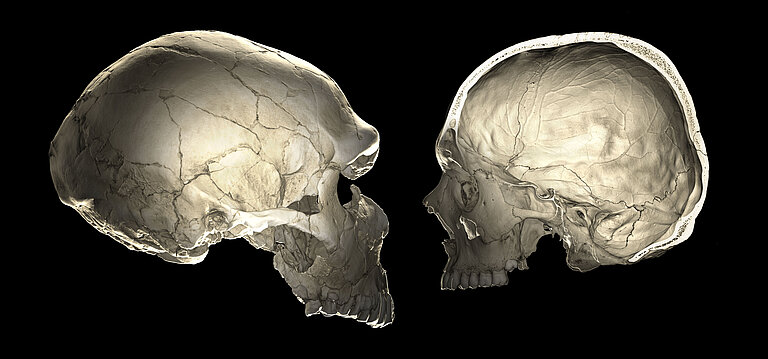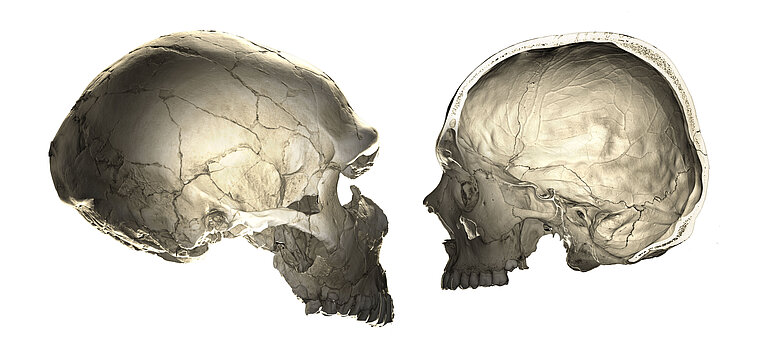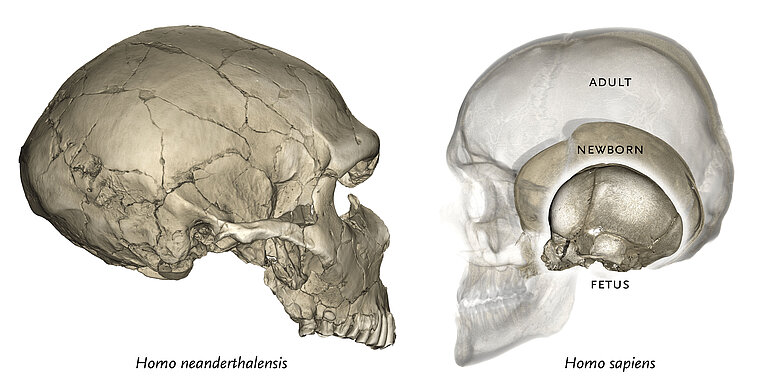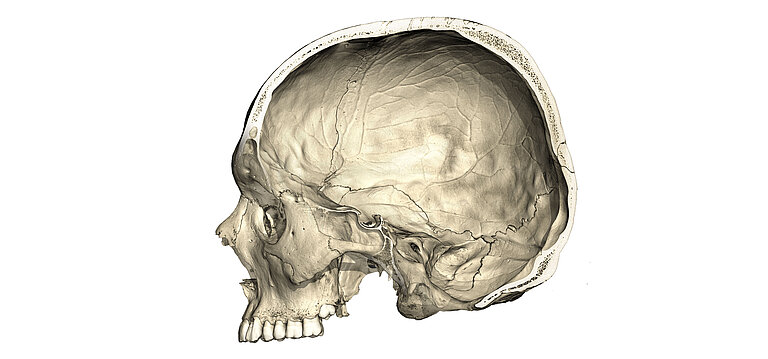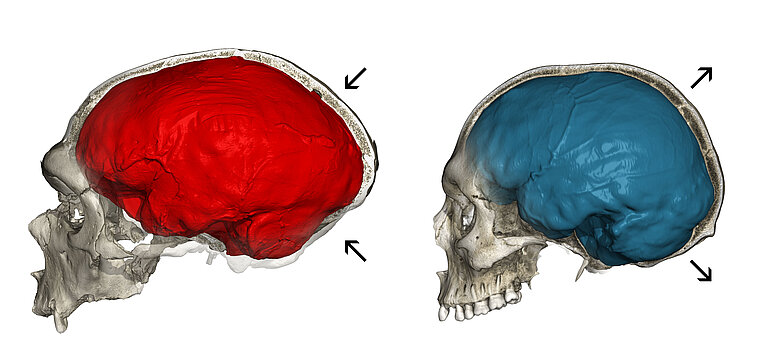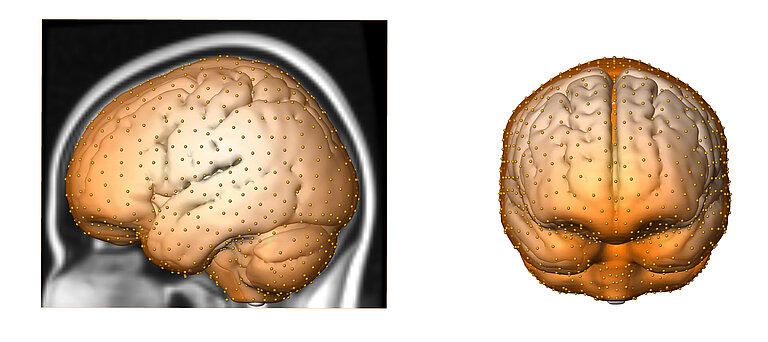Neandertal genes shed light on unique aspects of the modern human brain
*** Embargoed until: Thursday, December 13, 2018 / 11:00 a.m. Eastern Time (05:00 p.m. Central European time) ***
A characteristic feature of modern humans is the unusually round skull and brain, in contrast to the elongated shape seen in other human species. By studying Neandertal DNA fragments found in the genomes of living Europeans, scientists have now discovered genes that influence this globular shape. An interdisciplinary research team, led by the Max Planck Institutes for Psycholinguistics and Evolutionary Anthropology, brought together fossil skull data, brain imaging and genomics, as reported in Current Biology.
Download
Download press release (in English)
Download press release (in German)
Download all images (.zip file)
Download all videos (.zip file)
We have compiled our answers to Frequently Asked Questions here.
Images
Computed tomographic (CT) scan of a modern human cranium.
License: CC BY-NC-ND 4.0; Animation by Philipp Gunz.
Computed tomographic (CT) scan of a Neandertal cranium. The original fossil specimen (La Ferrassie 1) is housed at the Musée de l’Homme in Paris.
License: CC BY-NC-ND 4.0; Animation by Philipp Gunz.
Computed tomographic (CT) scans of a Neandertal cranium (left) and a recent modern human (right). The original fossil specimen (La Ferrassie 1) is housed at the Musée de l’Homme in Paris.
License: CC BY-NC-ND 4.0; Animation by Philipp Gunz.
